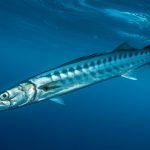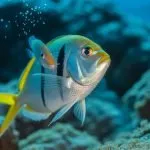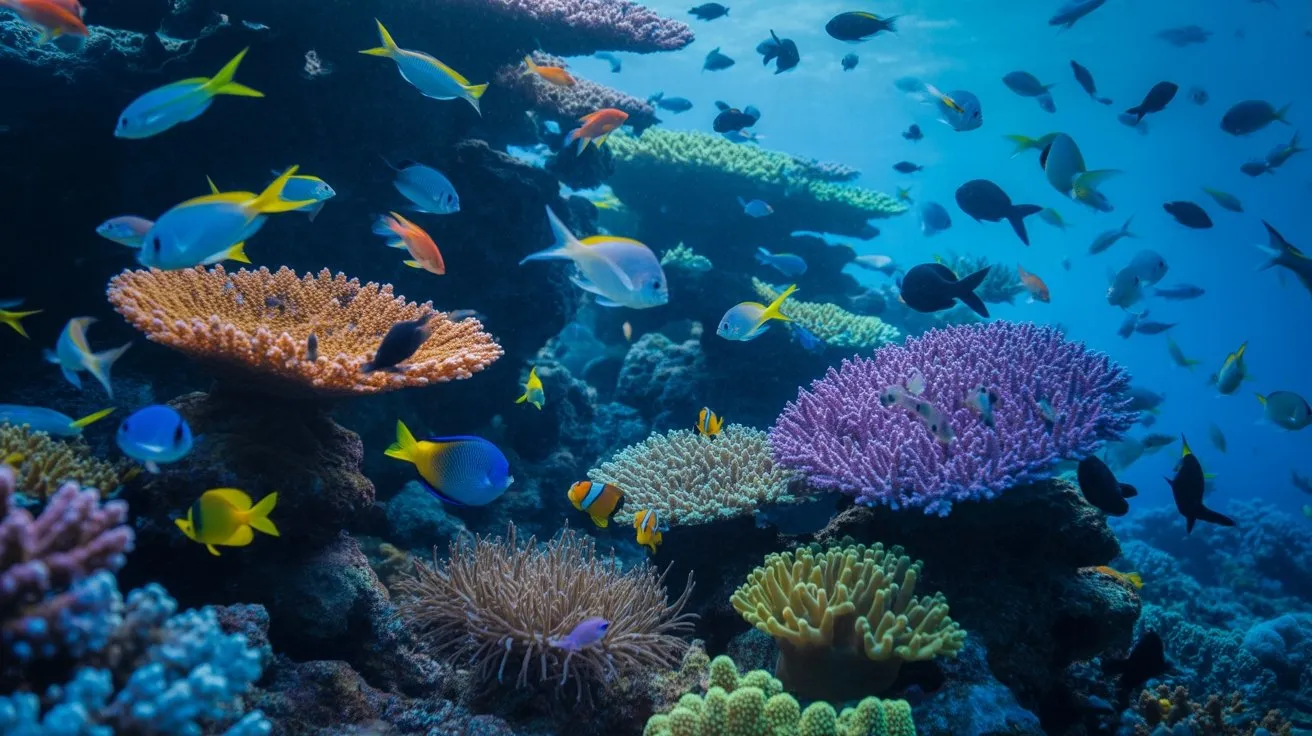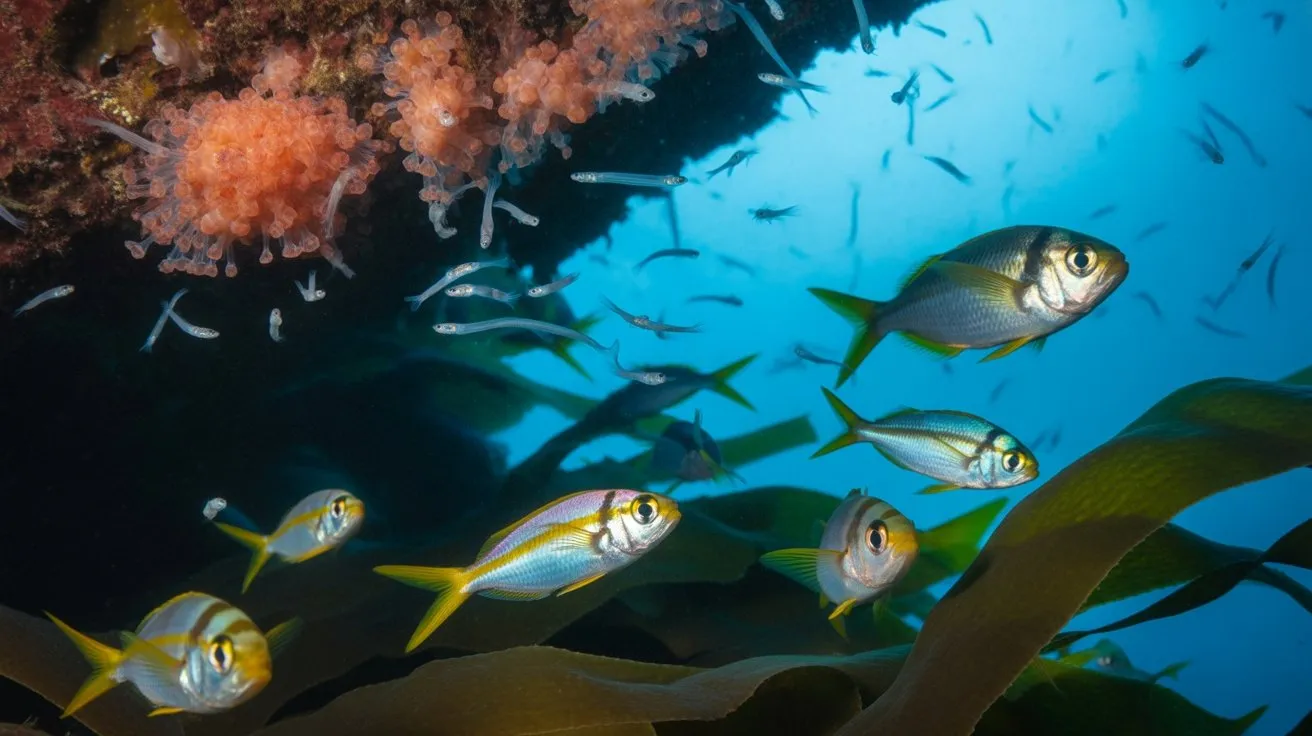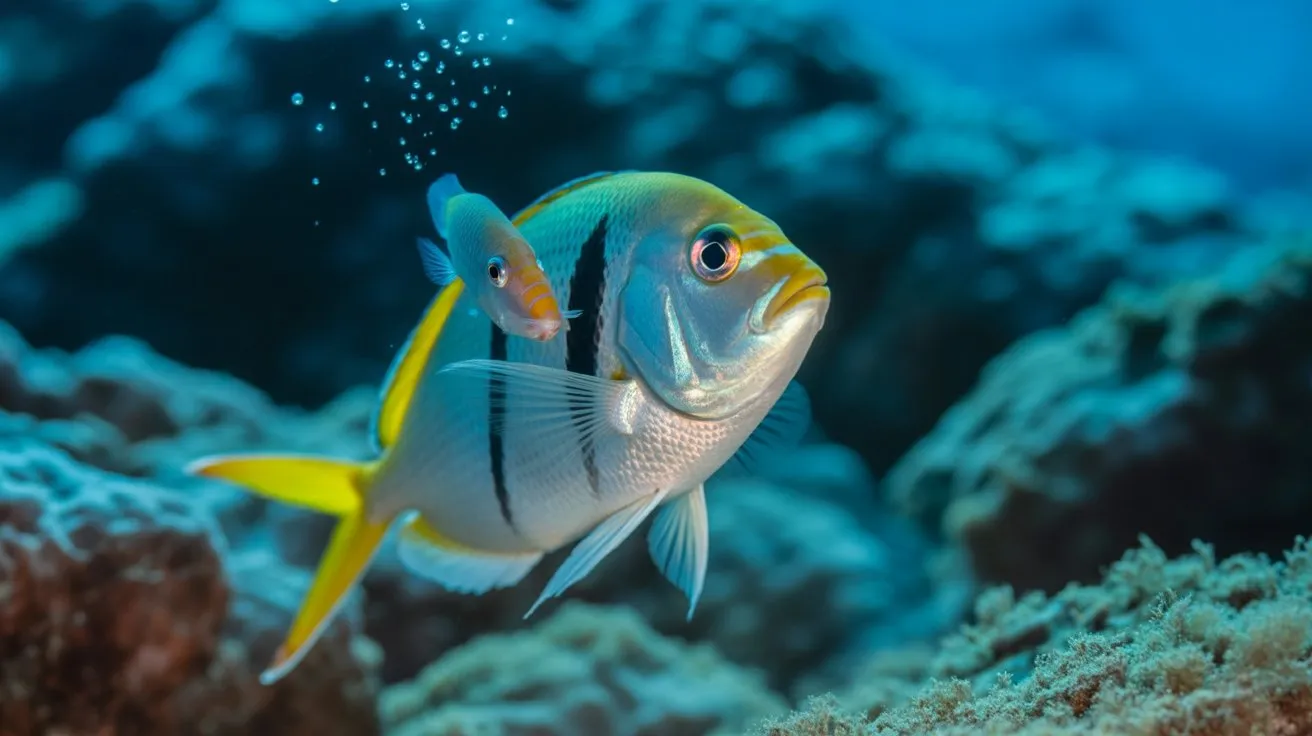You’ve heard sailors’ tales, questioned maritime folklore, and wondered about oceanic mysteries—but flying fish represent documented scientific reality. You’ll find these creatures possess measurable pectoral fin extensions reaching 15-20 centimeters, generating sufficient lift coefficients for sustained glide ratios of 10:1. Their hydrodynamic acceleration achieves velocities up to 20 meters per second before emergence. However, the biomechanical principles governing their aerial locomotion reveal complexities that challenge conventional understanding of vertebrate flight mechanics.
The Science Behind Flying Fish Gliding Mechanics
When flying fish launch themselves from the ocean surface, they exploit sophisticated aerodynamic principles that enable sustained gliding flight over distances exceeding 400 meters.
You’ll observe their enlarged pectoral fins function as primary airfoils, generating lift through modified wing-loading coefficients. Their streamlined fusiform bodies reduce parasitic drag while maintaining ideal lift-to-drag ratios during aerial phases.
You can measure their initial velocities reaching 70 kilometers per hour through powerful tail-fin propulsion before becoming airborne.
Their enlarged pelvic fins provide additional lift surfaces and directional stability during flight. You’ll notice they maintain gliding altitudes up to 6 meters above sea level, utilizing ground effect principles near the water surface.
Their flight duration typically spans 10-45 seconds, depending on wind conditions and launch angle optimization.
Physical Adaptations That Make Gliding Possible

Beyond their aerodynamic capabilities, flying fish possess specialized anatomical modifications that distinguish them from conventional marine species.
You’ll observe their enlarged pectoral fins, which extend considerably beyond typical fish proportions, creating wing-like structures that generate lift during aerial phases. Their streamlined body shape reduces drag coefficients while maximizing gliding efficiency.
You’ll notice their reinforced pectoral fin rays contain cartilaginous supports that maintain structural integrity against aerodynamic forces. The caudal fin’s elongated lower lobe enables sustained propulsion during surface skimming, generating speeds exceeding 35 mph.
Additionally, their scaled body surface creates minimal air resistance while specialized muscle arrangements control fin positioning mid-flight. These adaptations collectively enable gliding distances up to 400 meters, demonstrating remarkable evolutionary convergence with aerial locomotion principles.
Global Distribution and Habitat Preferences

Flying fish inhabit tropical and subtropical oceanic waters across the globe, with their distribution spanning latitudes between 40°N and 40°S where surface temperatures consistently exceed 20°C.
You’ll find concentrated populations in the Atlantic, Pacific, and Indian Oceans, where they’ve adapted to specific pelagic environments.
Their habitat preferences include:
- Epipelagic zones – Surface waters extending to 200-meter depths where sufficient light penetrates for ideal prey visibility
- Convergence areas – Oceanic boundaries where different water masses meet, creating nutrient-rich feeding grounds
- Open ocean environments – Areas with minimal coastal interference, allowing unobstructed gliding trajectories
You won’t encounter flying fish in polar regions or enclosed seas, as they require warm, nutrient-dense waters with adequate space for their aerial locomotion.
Their distribution patterns correlate directly with plankton abundance and ideal thermal conditions.
Predator Evasion and Survival Strategies
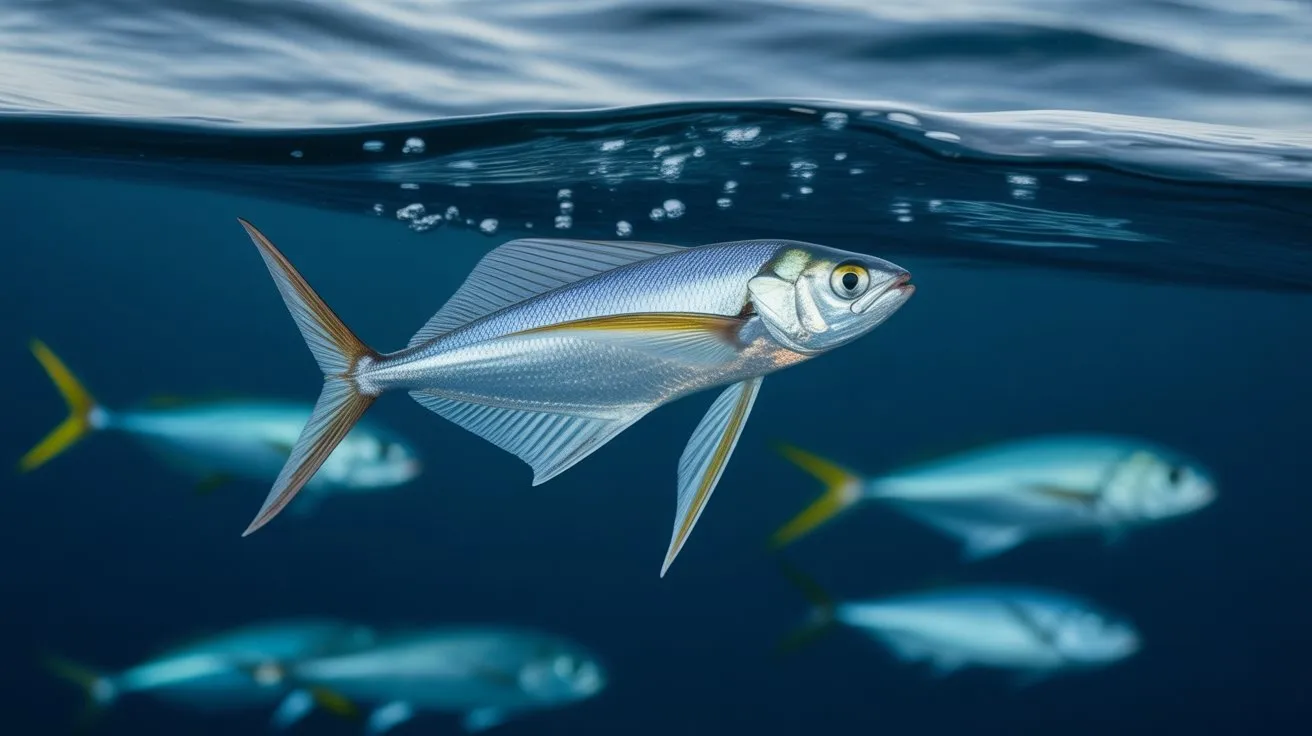
These nutrient-rich oceanic environments that support flying fish populations also harbor numerous predators, making effective evasion strategies paramount for species survival.
You’ll observe that flying fish employ gliding as their primary antipredator mechanism when pursued by tunas, dolphins, or billfish. Their hypertrophied pectoral fins generate lift coefficients reaching 1.2, enabling glide distances exceeding 400 meters at speeds up to 70 km/h.
You’ll notice they execute sequential glides by tail-beating at water’s surface, extending total flight time to 45 seconds. Their counter-shaded coloration provides camouflage from both aerial and aquatic predators.
Additionally, you’ll find schooling behavior reduces individual predation risk through dilution effects, while synchronized launching creates predator confusion during escape maneuvers.
Historical Maritime Observations and Early Documentation
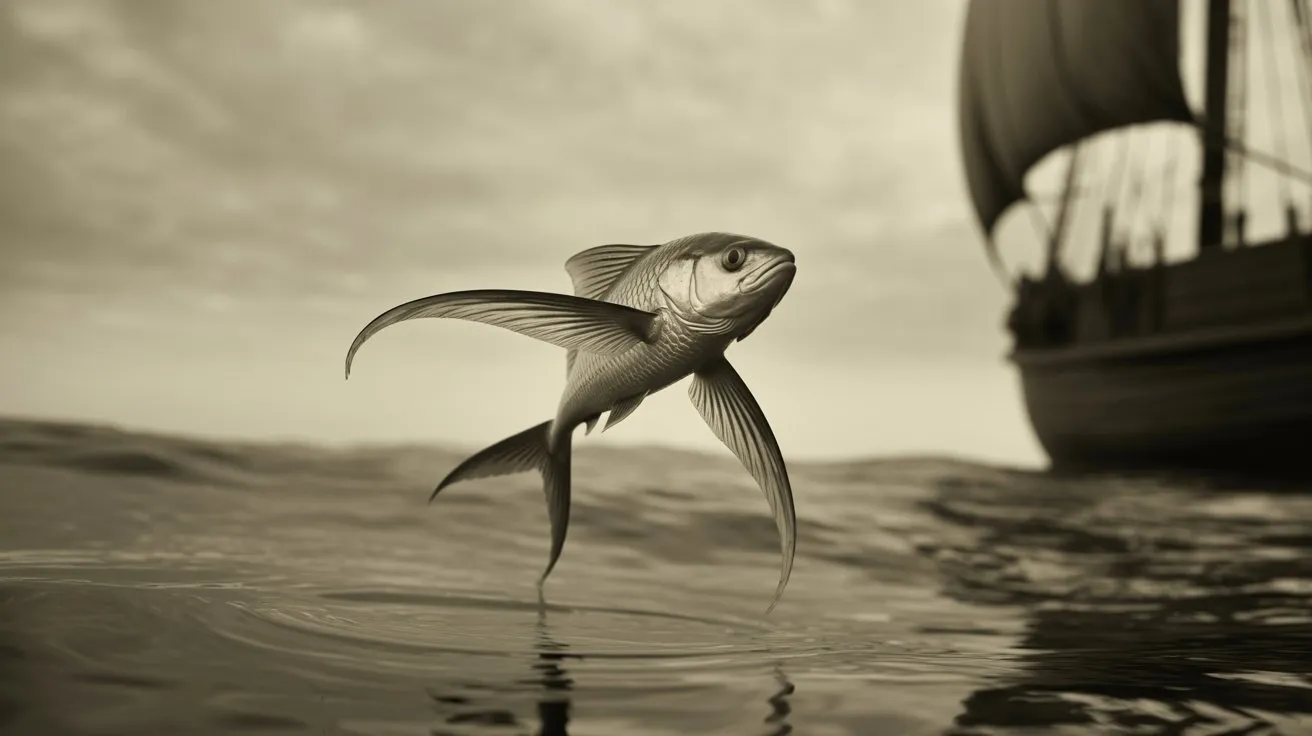
Since ancient mariners first ventured into tropical waters, flying fish have captured human attention through documented observations spanning millennia.
You’ll find these aerial locomotion events meticulously recorded across diverse maritime cultures, establishing scientific credibility for seemingly fantastical phenomena.
Archaeological evidence reveals systematic documentation patterns:
- Ancient Greek texts – Aristotle’s Historia Animalium(350 BCE) provided detailed morphological descriptions of wing-like pectoral fins.
- Medieval Islamic navigation records – Arab seafarers documented flight trajectories exceeding 200 meters during Red Sea expeditions.
- Renaissance exploration logs – Columbus’s crew recorded sustained gliding durations of 10-15 seconds in Caribbean waters.
You can trace modern ichthyological classification directly to these historical observations.
Early taxonomists relied heavily on maritime documentation to establish Exocoetidae family characteristics, validating centuries of sailor testimonies through rigorous scientific methodology.
Distinguishing Reality From Seafaring Legends
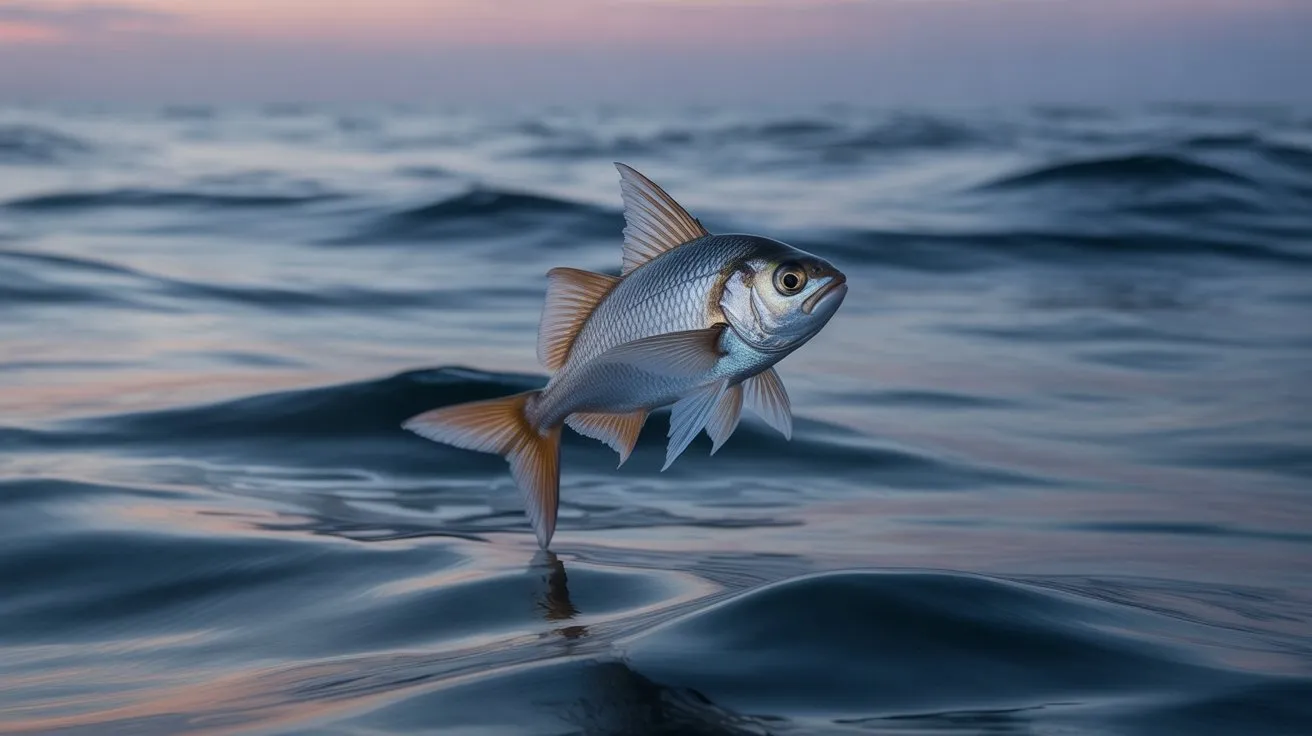
While maritime folklore often embellishes natural phenomena into mythological narratives, you’ll discover that flying fish capabilities exist within measurable biomechanical parameters rather than supernatural explanations.
You can observe documented flight durations averaging 30-45 seconds, with velocities reaching 60 kilometers per hour and distances spanning 400 meters. Their hypertrophied pectoral fins generate lift coefficients comparable to aircraft wings, enabling sustained gliding through aerodynamic principles.
You’ll find that mythological accounts describing perpetual flight or supernatural navigation capabilities contradict empirical data confirming ballistic trajectories governed by physics.
Scientific observations demonstrate that Exocoetidae species utilize momentum from underwater propulsion, achieving maximum heights of four meters above sea level.
Unlike legendary descriptions suggesting controlled flight patterns, you’ll note these fish follow predictable parabolic paths determined by initial velocity, wind conditions, and gravitational forces.
Conclusion
You might question whether these aerodynamic feats truly constitute flight, but biomechanical analysis confirms flying fish employ sophisticated lift-generating mechanisms through their hypertrophied pectoral fins. When you examine the morphological adaptations—including their fusiform body structure, specialized fin architecture, and propulsive tail dynamics—you’ll find empirical evidence supporting sustained gliding capabilities. These physiological modifications aren’t mythical; they’re measurable adaptations enabling genuine aerial locomotion through principles of fluid dynamics and aeronautical physics.

